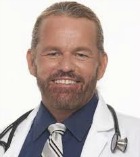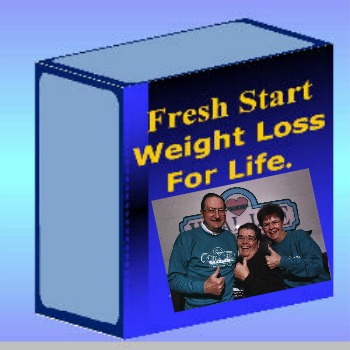Heart Disease and Exercise are a Great Combination!
Gene Millen, Author - Revised 5/11/15
The Big Bad Wolf was renowned for his ability to huff and puff. And you can reverse heart disease by including short spurts of huffing and puffing in your exercise routine.
Not so you can blow the little pig's house down, but to:
- improve the blood flow to your heart
- increase the flexibility of your arteries
- improve your lung power
- lower blood pressure
- convince your body to shed a few pounds of surplus body fat.
The American College of Sports Medicine Heart Disease and Exercise Recommendation
Arthur Weltman, Ph.D., and his team at the American College of Sports Medicine stressed that simply starting an exercise program is key to working toward enough exercise to change body composition.
If you have done little or no exercise for years you want to be sure to start out slowly. If you try to do too much your body will resist and you will want to quit. A ten minute walk is plenty for starters. But you want to keep a record of how long you go and how often.
ACSM and the American Heart Association recommends that healthy adults 18 to 65 years old need moderate-intensity aerobic physical activity for at least 30 minutes on five days each week or vigorous-intensity aerobic physical activity for at least 20 minutes on three days each week.
Heart Disease and Exercise Studies
A Canadian study compared individuals who did 30 second "all out" sprints three days per week to a group who worked at moderate-intensity for 40 to 60 minutes five days a week.
The "sprinters," who exercised for only a fraction of the time improved just as much as the long duration exercisers.
Another heart disease and exercise study showed that men and women who exercised at a higher intensity had lower blood pressure, lower triglycerides, higher HDL (good cholesterol) and less body fat than "moderate intensity" exercisers.
 Dr Al Sears' Research on Heart Disease and Exercise
Dr Al Sears' Research on Heart Disease and Exercise
Dr. Sears says, "When you burn fat, this sends a signal to your body to conserve fat for a future need.
When you use the short huff and puff high intensity routine, your body starts burning fat after your workout to replace the lost glycogen from your muscles and liver that have been depleted during your exercise session.
And here's the great thing. Your body will continue to burn fat for 24 hours after you have finished your exercise routine!
After a few weeks your system adjusts to the message that it doesn't need to store fat because it doesn't need it for fuel during the short term exercise session.
Heart Disease and Exercise Benefits Lung Function
Short bursts of high intensity exercise can also help to increase lung volume, which according to the famous Framingham Heart Study is the best predictor of longevity and absence of disease.
Yes, high intensity exercise will not only lower heart disease risk, but also make you live longer and better! And it takes much less time.
Heart Disease and Exercise Benefits Lung Function.
When your longs shrink, your oxygen supply plummets, which makes you tired, sluggish and ready for naptime.
When you don't challenge your heart and lungs, they get used to taking it easy, which sets the stage for them to shrink and become less resistant to stress.
Interval Training is the Heart Disease and Exercise Solution
Some people are concerned that if they get a little out of breath when they exercise this will cause a heart attack.
The chart will give you an illustration how the system should be implemented.
Over-exertion definitely needs to be avoided. Moderation is the key. If you can't remember the last time you had heavy breathing you need tostart out slow and easy.
When you find you can walk a few blocks without becoming winded it's time to add a few 20-30 second intervals of stepping up the pace.
Walk fast enough (you can do this on a cycle if you have trouble walking) so your heart rate increases and you are becoming a little short of breath...it isn't necessary to go too hard.
Slow down or stop until your pulse returns to normal and then repeat the process. Do this 3 or 4 times during a 10-12 minute exercise period and you will be surprised how quickly your body adapts. Consistancy is the key.
If You Have Heart Disease and Exercise
A Polar Heart Rate Monitor is an excellent investment.
In order to really know how hard you are working you need to see how fast your heart is beating. A heart rate monitor provides a window so you can measure exactly what your heart is doing.
When we opened the Vital Life Health and Fitness Center one of the features of our program was to provide Polar Heart Rate Monitors for each person. Our clients wrote down their resting heart rate and kept an eye on the rate as they increased the intensity of their exercise.
It can also alert you to an irregular heart rate. During my career as a fitness trainer the Polar heart rate monitor provided an early warning to an irregular heart rate that could have had serious consequences. You can find some good options on Amazon.
Thanks for joining us on the journey toVital Heart Health for Life!
Exercise and Heart Disease Articles
More on Heart Disease and ExerciseLower Blood Pressure Instantly.
Interval Training Improves Lung Function
Fitness Exercise Program Exercise is Good Medicine
Aerobic Exercise
Aerobic Exercise Program
Exercise Plan to Lose Weight
Exercise Principles
Exercises for Love Handles
Exercise Weight Loss
Clinical Studies - References
1Walter Bortz, M.D., Stanford researcher
